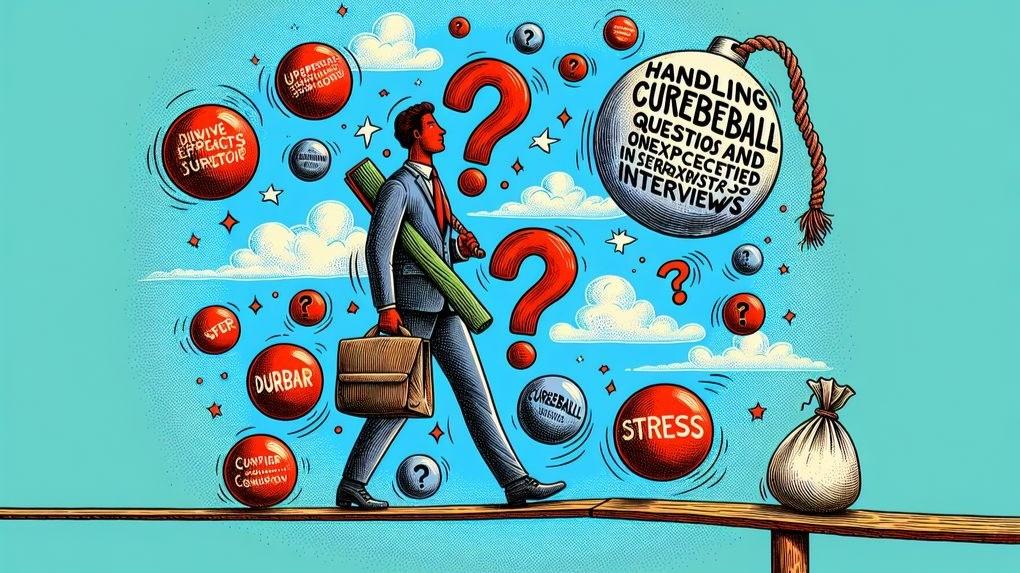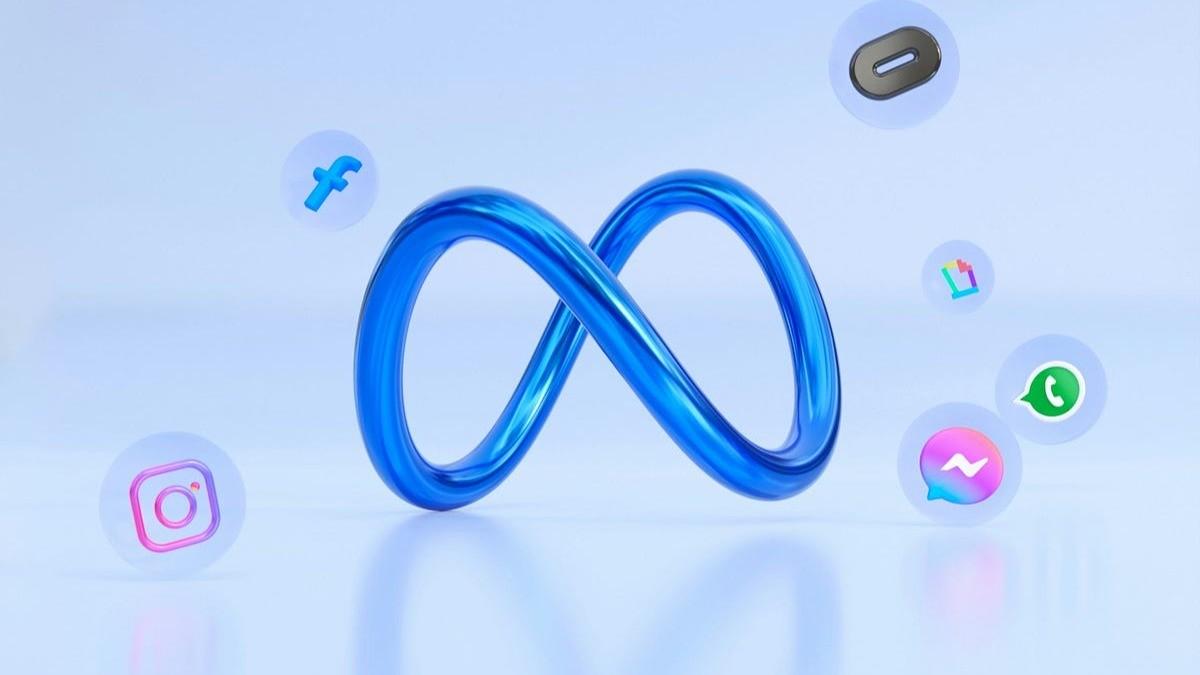Section 1 - Introduction: When the Brain Freezes Before the Code Does
Every engineer has faced it, that moment in an interview when your mind goes blank. You’ve been explaining your model pipeline or coding a logistic regression implementation, and suddenly the interviewer drops a question so unexpected that your neurons seem to disconnect from your mouth.
It’s not a syntax issue. It’s not even that you don’t know the concept. It’s something deeper, the psychological paralysis that comes from surprise.
Machine learning interviews are notorious for this. You can prepare for gradient descent, regularization, and hyperparameter tuning all day, but what about when the interviewer asks:
“How would you debug a model that performs better on validation than production?”
or
“If your model had to justify its prediction to a regulator, how would you approach explainability?”
These are curveball questions, designed not to test memory, but mental composure, adaptability, and reasoning under pressure.
And that’s where many engineers fail, not because they lack skill, but because they lose control of how they think in that moment.
This blog will teach you how to handle those curveballs, calmly, systematically, and persuasively.
We’ll combine insights from behavioral neuroscience, FAANG interviewer frameworks, and real ML case studies to help you turn those “Oh no” moments into structured conversations that actually impress interviewers.
By the end, you’ll learn to:
- Decode what a curveball question is really testing.
- Build a “reasoning skeleton” that keeps you composed.
- Use time strategically to sound structured even when uncertain.
- Communicate thought processes that signal grace under ambiguity.
Check out Interview Node’s guide “The Forgotten Round: How to Ace the Recruiter Screen in ML Interviews”
Section 2 - What Curveball Questions Really Test (and Why Interviewers Use Them)
If you’ve ever walked out of an ML interview thinking, “That question came out of nowhere,” you’re not alone. Every senior recruiter at FAANG or OpenAI will tell you: curveball questions are deliberate, not random.
They’re not meant to catch you off guard for sport, they’re meant to reveal how you think when your script fails.
a. The Hidden Purpose of Curveballs
Interviewers already know that you can train a model or explain overfitting, you wouldn’t have reached the technical round otherwise. What they want to see now is how you function when certainty disappears.
Because in real-world ML engineering, you’ll constantly face uncertain, ambiguous, even contradictory situations:
- A model suddenly degrades in production despite stable data distributions.
- A stakeholder asks, “Why did your model make this decision?”, and you don’t have SHAP explanations yet.
- A new regulation forces you to justify your feature selection process retroactively.
These moments test judgment, communication, and calm reasoning, exactly what curveball questions are designed to simulate.
A recruiter once told us at Interview Node:
“We’re not trying to see if you can predict the future. We’re trying to see if you can think out loud when the future surprises you.”
That’s the essence. Curveball questions test metacognition, your ability to reason about your reasoning.
Check out Interview Node’s guide “The Hidden Skills ML Interviewers Look For (That Aren’t on the Job Description)”
b. The Science of Freezing: Why Your Brain Goes Blank
When a surprising question hits, your prefrontal cortex, responsible for planning and decision-making, temporarily shuts down. This is the “amygdala hijack,” a term coined by psychologist Daniel Goleman.
The amygdala interprets surprise as threat, releasing cortisol and adrenaline. Your body wants to flee, not formulate equations. Blood flow shifts from rational areas of the brain to motor areas. In short: your brain is biologically wired to freeze first, think later.
That’s why even brilliant engineers sometimes stutter or ramble when asked unconventional ML questions like:
“How would you handle missing data if it’s not random but socially biased?”
It’s not about intelligence; it’s about neuro-regulation under novelty.
Interviewers understand this, in fact, many design these moments intentionally. They’re looking for candidates who can recover composure, slow down their thinking, and bring structure to chaos.
That’s a predictor of success in actual engineering work, where surprises happen weekly.
c. The Three Dimensions of a Curveball Question
Most curveball questions fall into one of three categories. Understanding this taxonomy will help you identify what type of thinking is being tested, and therefore, how to respond.
The “What If” Curveball - Testing Adaptability
These questions introduce a twist to a known concept.
“What if your model suddenly stops improving after 10 epochs, but loss is still dropping?”
Here, they’re not testing math, they’re testing adaptability. Can you handle unexpected feedback loops without panic?
Strategy: verbalize your hypothesis-testing steps.
“I’d first check for overfitting, then learning-rate scheduling. If loss is dropping but accuracy isn’t, I’d examine class imbalance or data drift.”
This structure shows that even in uncertainty, your thinking remains ordered.
The “Why” Curveball - Testing Depth
This type probes why you made a design choice.
“Why did you choose XGBoost over logistic regression for this dataset?”
They know both work, they want to see if your reasoning goes beyond surface-level intuition.
Strategy: articulate trade-offs.
“I preferred XGBoost because of non-linearity and interpretability trade-offs, but if explainability was critical, I’d revert to logistic regression with calibrated probabilities.”
You’ve turned a trap into a case study in professional judgment.
The “How Would You” Curveball - Testing Systems Thinking
These are open-ended scenario builders:
“How would you deploy a fairness-aware model in a healthcare system?”
They’re measuring your systems mindset, do you think only about algorithms, or also data ethics, feedback loops, and user impact?
Strategy: map the response to stages, data → model → deployment → monitoring → retraining. That linear framing signals structured thinking, even if you don’t have the “perfect” answer.
Check out Interview Node’s guide “Beyond the Model: How to Talk About Business Impact in ML Interviews”
d. The Interviewer’s Perspective: What They’re Actually Listening For
When you’re answering a curveball question, interviewers aren’t just listening for correctness. They’re tracking subtle behavioral signals:
- Do you pause before answering? That’s a sign of composure.
- Do you ask clarifying questions? That’s a sign of mature communication.
- Do you reframe the problem before solving it? That’s a sign of cognitive leadership.
One senior ML interviewer at Google told Interview Node:
“A strong candidate doesn’t react instantly. They narrate their thought process calmly, that’s how we know they can handle production chaos.”
In fact, many top interviewers quietly downgrade candidates who rush into coding after a curveball. It signals panic. What they value instead is reflective reasoning, the ability to buy time through structure.
That’s why the best response to an unexpected question often begins with a phrase like:
“That’s an interesting scenario, let me think aloud for a second.”
It’s a small sentence, but psychologically powerful. You’ve bought yourself five seconds of clarity and reframed the situation as a dialogue, not a test.
e. The Myth of “Trick Questions”
Many engineers assume interviewers throw curveballs to catch them out, but in elite hiring cultures, that’s not true.
Companies like Meta, OpenAI, and Anthropic use ambiguity questions to test real-world problem behavior. In production ML systems, surprises happen constantly, model drift, API failures, feature mismatches, unexpected user data. Engineers who freeze during interviews often freeze under pressure later, too.
So the curveball isn’t cruelty, it’s calibration. It filters for engineers who can think gracefully under stress.
Key Takeaway
Curveball questions aren’t about right answers; they’re about right reactions.
Interviewers are silently asking:
“When things don’t go according to plan, does this engineer collapse, or adapt?”
If you can stay calm, structure your thinking, and explain your reasoning transparently, you’ve already passed the hardest part of the test.
In short: curveballs test composure, not correctness.
And composure can be learned, which is what we’ll build next.
Section 3 - The Psychology of Freezing (and How to Override It in Real Time)
Before we talk about frameworks and phrases, let’s talk biology.
When a curveball question lands in an ML interview, something unpredictable like
“How would you retrain a model if the feedback labels themselves are biased?”
— your body doesn’t see it as a question.
It sees it as a threat.
That microsecond reaction, pupils dilating, chest tightening, hands getting warm, is your amygdala, the primitive part of your brain that evolved to detect danger. It can’t tell the difference between a lion in the wild and a senior engineer at Meta asking a tough question.
Your logical brain (the prefrontal cortex) momentarily loses access to working memory. That’s why your mind “goes blank.” You haven’t forgotten the concept, your cognitive bandwidth is simply hijacked.
In neuroscience, this is called transient hypofrontality, a temporary drop in executive function when stress hormones spike. It lasts only a few seconds, but those seconds can define an interview.
a. What “Freezing” Really Is And Why It Happens to Smart People
Freezing isn’t failure. It’s actually a defensive adaptation, your brain’s way of avoiding mistakes when uncertain.
In interviews, that looks like:
- Going silent mid-sentence.
- Over-explaining familiar concepts to buy time.
- Defaulting to vague answers like “It depends on the data.”
But here’s the paradox: what you think is protecting you actually undermines you. Silence signals uncertainty. Rambling signals loss of control. Both lower interviewer confidence.
High-IQ individuals are more prone to freezing because they over-analyze in real time. The brain starts searching for “the perfect answer”, and stalls.
So the goal isn’t to “not freeze”, it’s to unfreeze faster.
b. The 3-Second Rule: How to Stop a Cognitive Spiral
The key is regaining access to your prefrontal cortex, your reasoning engine, before panic takes over.
The fastest way to do that is the 3-Second Rule, a micro-reset used by elite performers, from surgeons to astronauts.
Here’s how to apply it in a live ML interview:
- Pause. Breathe in slowly for three seconds through your nose.
- Acknowledge. Say something like, “That’s a really interesting question, let me think out loud for a moment.”
- Redirect. Restate the question in your own words.
This tiny loop has two effects:
- Biologically, slow breathing lowers cortisol, reopening prefrontal circuits.
- Socially, verbalizing buys you time while projecting composure.
Interviewers interpret that as confidence, not hesitation.
It’s the same technique used by top-tier engineers during on-call incidents: pause, summarize, then act.
c. The “Reframing Reflex”: How to Turn a Threat into a Puzzle
Your brain freezes when it labels uncertainty as threat. The trick is to reframe it as curiosity.
Before answering a tough ML question, silently say to yourself:
“This isn’t a test. It’s a puzzle.”
That mental shift changes your internal chemistry. Cortisol drops, dopamine rises. Suddenly, the question becomes engaging, not intimidating.
Example:
Interviewer: “How would you improve a model that performs worse with more data?”
Default reaction: Oh no, I’ve never faced this.
Reframed mindset: Fascinating, what could cause that anomaly?
Now you’re exploring, not defending. That difference is visible in your tone, your body language, even your syntax.
When you reframe threat as curiosity, your answer becomes collaborative instead of defensive, and that’s exactly what interviewers look for: engineers who stay analytical when surprised.
d. The Verbal Anchor: “Let Me Walk You Through My Thinking”
When your brain blanks, your best rescue tool is speech itself. Talking engages working memory and stabilizes thought flow.
That’s why experienced candidates use verbal anchors, short, structured phrases that reorient their mind.
Examples:
- “Let me break this down step by step.”
- “Here’s how I’d reason through it.”
- “I see two possible causes; let’s examine each.”
These phrases do three things simultaneously:
- Signal confidence to the interviewer.
- Force your brain to re-enter sequential thinking.
- Buy a few seconds to recall technical details naturally.
It’s not filler, it’s a cognitive anchor.
Professional interviewers recognize and respect these patterns. They show you can stay rational under stress, a key competency for any ML engineer handling real-time production failures.
Check out Interview Node’s guide “Behavioral ML Interviews: How to Showcase Impact Beyond Just Code”
e. Physiological Grounding: Train Your Nervous System Beforehand
You can also train your brain not to freeze in the first place. Before every interview, perform a 2-minute grounding ritual that reduces physiological threat response.
- Step 1: Box Breathing (4x4x4x4)
Inhale for 4 seconds, hold 4, exhale 4, hold 4. Repeat 3–4 times. This mimics Navy SEAL stress-regulation training and stabilizes heart rate. - Step 2: Power Posture
Sit upright, shoulders relaxed, chin neutral. Body position influences confidence hormones (testosterone up, cortisol down). - Step 3: “Future Projection” Visualization
Picture yourself answering with calm clarity. Visualization activates the same neural pathways as performance, pre-conditioning confidence.
This might sound abstract, but it works. In a 2024 Journal of Applied Psychology study, candidates who practiced pre-interview grounding techniques showed 27% higher coherence in their speech and 21% fewer filler phrases under stress.
Confidence is not just mindset, it’s nervous system training.
f. How to Recover Gracefully After Freezing
Everyone freezes eventually. What differentiates great candidates is recovery grace.
If you lose your thread mid-answer, don’t panic, use the “Reset and Rebuild” technique:
- Pause - breathe once.
- Label the gap - “Let me revisit that point.”
- Reframe - pick up your last logical thread and summarize.
- Redirect - continue with clarity: “So, coming back to the model retraining issue…”
You’ve turned a lapse into leadership, because composure under imperfection is more impressive than flawless delivery.
Remember, interviewers are humans too. They don’t expect perfection; they expect presence.
Key Takeaway
Freezing isn’t weakness, it’s a reflex.
But composure is a skill.
By learning to breathe, verbalize, and reframe in those first few seconds, you demonstrate the trait interviewers prize most: psychological stability under uncertainty.
When your mind freezes, don’t fight it, structure it.
When the question surprises you, don’t resist it, narrate it.
That’s not just how you survive a curveball; it’s how you turn it into your standout moment.
Section 4 - The Step-by-Step Framework: How to Answer Curveball Questions Like a Pro
When you’re hit with a tough, unexpected question in a machine learning interview, the kind that feels like it came from a different planet, your goal isn’t to deliver a perfect answer.
Your goal is to show composure, reasoning, and clarity under uncertainty.
The truth is, most interviewers don’t care whether you arrive at the “correct” solution to a curveball question. What they’re evaluating is how your brain organizes chaos.
Let’s break down a proven framework that hundreds of ML engineers have used successfully during Interview Node’s mock interviews to navigate curveballs with confidence.
a. Step One: Pause and Acknowledge
When a question surprises you, the worst thing you can do is rush into an answer.
Why? Because silence feels scary, and engineers often fill it with filler. That filler kills clarity.
Instead, pause intentionally.
Say something like:
“That’s a great question, let me think aloud for a few seconds.”
This short sentence achieves three powerful outcomes:
- It shows confidence, you’re not flustered by surprise.
- It buys you time to breathe and structure your answer.
- It resets your interviewer’s expectations from “speed” to “reasoning.”
Think of this as your opening move, the chess equivalent of developing your pieces before committing to a strategy. Check out Interview Node’s guide “The Psychology of Interviews: Why Confidence Often Beats Perfect Answers”
b. Step Two: Rephrase the Question
Rephrasing is not stalling, it’s thinking aloud. It helps both you and the interviewer confirm mutual understanding.
Example:
Interviewer: “How would you handle a model that performs worse with more training data?”
You: “So, you’re asking how I’d debug a case where increasing data size actually hurts generalization, right?”
This accomplishes three subtle but critical things:
- Clarification: You ensure you’re solving the right problem.
- Framing: You define the mental sandbox in which you’ll think.
- Engagement: You turn the interview into a conversation, not a test.
Reframing is a leadership skill. It signals maturity and collaboration, qualities that matter as much as technical depth.
c. Step Three: Structure Your Thinking Before You Speak
This is where most candidates stumble. Under stress, they start streaming consciousness, jumping from data cleaning to model architecture to deployment with no visible order.
Instead, use a mental scaffolding to organize your response. The most effective one for curveball ML questions is the “3P Framework”, Problem → Possibilities → Plan.
Let’s apply it step-by-step.
🧩 Problem: Restate the Scenario
Show that you understand the issue clearly.
“We’re seeing degraded performance when more data is added, this likely means a data quality or distribution issue rather than model overfitting.”
🧩 Possibilities: Generate Hypotheses
Think aloud and enumerate possible causes.
“It could be noisy data, inconsistent labeling, or a domain shift between old and new data.”
Even if you’re unsure, generating structured hypotheses shows analytical depth.
🧩 Plan: Outline a Diagnostic Path
Now walk through how you’d approach testing those hypotheses.
“I’d start by checking for data drift using KL divergence or PSI, then validate label consistency with cross-source sampling. If those look fine, I’d explore retraining with stratified sampling to rebalance representation.”
You’ve just transformed an uncertain question into a scientific exploration, and that’s precisely what interviewers want to see.
d. Step Four: Think Aloud in Structured Layers
Thinking aloud is an art. The best candidates use layered communication, starting high-level, then zooming into specifics if prompted.
Example:
“At a high level, I’d treat this as a data integrity problem rather than a modeling issue. Initially, I’d validate data distributions; if that looks stable, I’d focus on feature engineering assumptions, maybe some derived features don’t scale well with new data.”
Then, if the interviewer dives deeper, you can expand.
This approach keeps your response modular. It’s like writing code with functions, clean, organized, and easy to extend under questioning.
e. Step Five: Narrate Trade-Offs (This Is the Secret Sauce)
Curveball questions rarely have a single correct answer. What interviewers want to see is awareness of trade-offs.
For example:
“I could try aggressive regularization to reduce overfitting, but that risks underfitting if the new data actually improves diversity. Alternatively, I might use data weighting to prioritize recent patterns without discarding older ones.”
This signals seniority. You’re no longer “guessing the right answer”, you’re reasoning like a peer.
f. Step Six: Summarize and Close Gracefully
The most forgotten but powerful step: end cleanly.
After exploring, summarize in one confident statement:
“So, to recap, I’d diagnose the issue by validating data drift, checking labeling consistency, and balancing retraining strategies. The goal is to isolate whether this is a data, model, or deployment-level problem before tuning further.”
That closing sentence signals completeness and clarity, two traits interviewers rate highly in ML interviews.
Even if your initial path wasn’t perfect, a strong closing leaves a lasting impression.
g. Step Seven: Handle Follow-Ups Like a Dialogue, Not a Defense
Curveball questions often lead to follow-ups like:
“What if the drift isn’t measurable?”
“What if data labels are delayed?”
These aren’t traps, they’re collaboration cues. The interviewer is testing if you can iterate ideas naturally.
Instead of defending your earlier answer, build on it.
“That’s a fair point, if drift isn’t measurable, I’d treat this as an unsupervised anomaly problem and monitor feature-space embeddings instead.”
This shows flexibility, a critical signal that you can adapt reasoning dynamically.
Check out Interview Node’s guide “Group and Panel ML Interviews: Strategies to Stand Out Without Overpowering”
Key Takeaway
Curveball questions don’t require brilliance, they require structure.
The “3P Framework” (Problem → Possibilities → Plan) keeps you composed, organized, and analytical.
Even if you don’t know the final answer, you’ll sound like an engineer who knows how to reason toward one.
Remember: Interviewers aren’t hiring a walking Stack Overflow, they’re hiring a calm, structured thinker who can handle chaos.
Conclusion - The Calm Engineer Always Wins
Curveball questions are not a test of knowledge, they’re a test of grace under uncertainty.
Every interviewer in FAANG, OpenAI, or Anthropic knows this: no real-world ML engineer remembers every formula or theorem. What separates great candidates from the rest is not how fast they code or recall, it’s how calmly they structure ambiguity.
Freezing is human. So is recovering.
What interviewers remember isn’t that you stumbled, it’s how you un-stumbled.
Did you take a breath, smile, and say, “Interesting, let me think this through”?
Did you build your answer logically, even if you didn’t have the full picture?
Did you stay curious instead of defensive?
Those are the engineers who get offers, not because they’re flawless, but because they demonstrate thinking maturity.
In modern ML hiring, technical brilliance without emotional regulation is like a high-accuracy model with no stability under drift, impressive on paper, risky in production.
So, if you remember one thing from this blog, remember this:
You can’t control the questions, but you can control your composure.
That’s what great interviewers are looking for.
That’s what every senior ML engineer eventually learns to master.
FAQs, Curveball Questions in ML Interviews
1. What exactly counts as a “curveball question” in ML interviews?
A curveball question is one that’s open-ended, ambiguous, or unexpected, designed to test your reasoning, not your recall. Examples include, “What would you do if your model accuracy suddenly drops in production?” or “How would you ensure fairness in an unbalanced dataset?” They’re meant to reveal adaptability, not memory.
2. Why do I freeze during tough or unexpected interview questions?
You freeze because your brain’s amygdala perceives surprise as threat. It floods your system with cortisol, shutting down working memory. This “amygdala hijack” is biological, not intellectual. You can override it by pausing, breathing, and reframing uncertainty as curiosity instead of danger. Over time, this response becomes automatic.
3. How can I prepare for curveball questions in advance?
You can’t memorize them, but you can train for them. Practice “unknown scenario drills”: pick random real-world ML problems and talk through them aloud. Focus on structuring your reasoning (Problem → Hypotheses → Plan). You’re not learning answers, you’re conditioning composure. Mock interviews at Interview Node use this method to build adaptability muscle.
4. What’s the best way to respond when I genuinely don’t know the answer?
Be transparent and structured. Say, “That’s something I haven’t handled directly, but here’s how I’d reason through it.” Then outline a step-by-step exploration path. Interviewers don’t expect omniscience, they expect logic. Admitting uncertainty with structure is seen as maturity, not weakness.
5. Are curveball questions more common in FAANG or AI startups?
Both, but for different reasons. FAANG uses them to test structured reasoning at scale; startups use them to test problem ownership and creativity. At startups like Replit or Hugging Face, curveballs often focus on trade-offs and ambiguity. At FAANG, they test whether you can reason under standard frameworks (data → model → impact).
6. What’s an example of a curveball in a behavioral ML interview?
Example: “Tell me about a time when a model you deployed behaved unexpectedly.”
Interviewers are not looking for perfection, they want to see how you diagnosed, communicated, and resolved the issue. Your structure should be: Situation → Complication → Action → Result → Reflection. The reflection is where you show emotional maturity and self-awareness.
7. How do interviewers judge your response if you stumble mid-answer?
They don’t penalize the stumble, they evaluate recovery. A short reset like, “Let me rephrase that for clarity,” or “Actually, I see a better way to approach this,” signals control. It shows you can regulate pressure. That’s far more impressive than speaking perfectly but rigidly.
8. What’s the best mindset before going into an interview to avoid freezing?
Think of it as a collaboration, not an evaluation. The interviewer isn’t an examiner; they’re a future colleague trying to see how you think. Replace fear with curiosity: “Let’s solve this puzzle together.” This mindset switch reduces stress chemistry and improves verbal fluency.
9. Should I practice thinking aloud before interviews?
Absolutely. Thinking aloud is a learned communication skill, not an instinct. Record yourself solving an ML problem and listen for gaps in structure. You’ll notice filler words, jumps in logic, or missing transitions. Fixing those patterns trains your brain to narrate calmly under pressure.
10. How can I sound confident when I’m actually unsure?
Confidence in interviews isn’t pretending to know, it’s showing how you think. Phrases like “Let’s explore both possibilities,” or “Here’s one approach, though there might be trade-offs,” project confidence through reasoning. It’s the difference between guessing and guiding.
11. Can you give an example of a good response to a tough ML curveball?
Question: “How would you explain a drop in model accuracy after data labeling improved?”
Answer:
“That’s counterintuitive, but it likely indicates label drift or misalignment between old and new ground truth. I’d first analyze label distribution changes, then retrain on a balanced subset to isolate effects. If the issue persists, I’d revisit feature-label relationships. Sometimes better labels expose model weaknesses.”
That’s not memorized, it’s reasoned.
12. Are curveball questions designed to trap me?
No. True interviewers aren’t testing trickiness, they’re testing thinking under novelty. The trap exists only if you react defensively. If you treat it as exploration, you turn the moment into collaboration. Remember: every “hard” question is an opportunity to show how you think when the map disappears.
13. What should I do if my interviewer interrupts or challenges my answer?
Stay calm and curious. Instead of defending, invite discussion: “That’s a good point, how would you approach it differently?” This demonstrates psychological safety and adaptability, two traits hiring managers rank as critical in senior ML engineers. Never interpret challenges as conflict; they’re interest signals.
14. How can I train my brain to think clearly under pressure?
Repetition + physiology. Simulate high-stress conditions: timed mock interviews, speaking out loud, camera-on practice. Combine that with grounding techniques, controlled breathing, posture adjustment, visualization. Over time, your nervous system learns that interviews are safe, not dangerous, and performance clarity returns automatically.
15. What’s the biggest mistake engineers make with curveball questions?
They try to impress instead of structure. When you chase complexity, you lose coherence. The smartest engineers use simple, sequential logic under stress, they narrate calmly, avoid jargon, and prioritize reasoning. Interviews aren’t scored on IQ; they’re scored on composure and clarity.
Final Takeaway
You can’t avoid curveballs, but you can train for them.
When the unexpected hits, slow down, breathe, and structure your thoughts. Use frameworks like 3P (Problem → Possibilities → Plan) or Reframe → Hypothesize → Explain.
Above all, remember:
Calm is competence.
The interviewer isn’t grading your answers, they’re grading your response to surprise.
If you can handle ambiguity gracefully, you’ve already proven what ML engineers are hired for: clear thinking when everything else breaks.






